If you’re trying to decide between snowblades (short skis) and long skis, here’s the quick answer: snowblades are easier to learn, more portable, and great for tight turns or crowded slopes. Long skis, on the other hand, are built for speed and perform better in deep powder. Your choice really depends on what you value most - maneuverability or speed.
Key Takeaways:
- Snowblades: Short (26–47 inches), easy to use, lightweight, and perfect for beginners or casual skiers. They’re less intimidating and work with regular winter boots.
- Long Skis: Over 59 inches, better for high speeds and deep snow. They require more skill, specialized boots, and extra gear like poles.
Quick Overview:
- Learning Curve: Snowblades are beginner-friendly and take minutes to get the hang of. Long skis require lessons and practice.
- Portability: Snowblades fit in a backpack and are easy to carry. Long skis need roof racks or large bags.
- Cost: Snowblades are more affordable, with fewer accessories required.
- Performance: Snowblades excel at quick turns and agility. Long skis dominate in speed and stability on powder.
Think about your goals: If you’re after fun, convenience, and quick progress, snowblades might be your best bet. If you’re chasing speed or tackling big mountain terrain, long skis are worth considering. Let’s dive deeper into what makes each option stand out.
Snowboarder tries Snowfeet* | Which Snowfeet* Short Ski is the Best? | Snowblades 44, 65, 99 Review
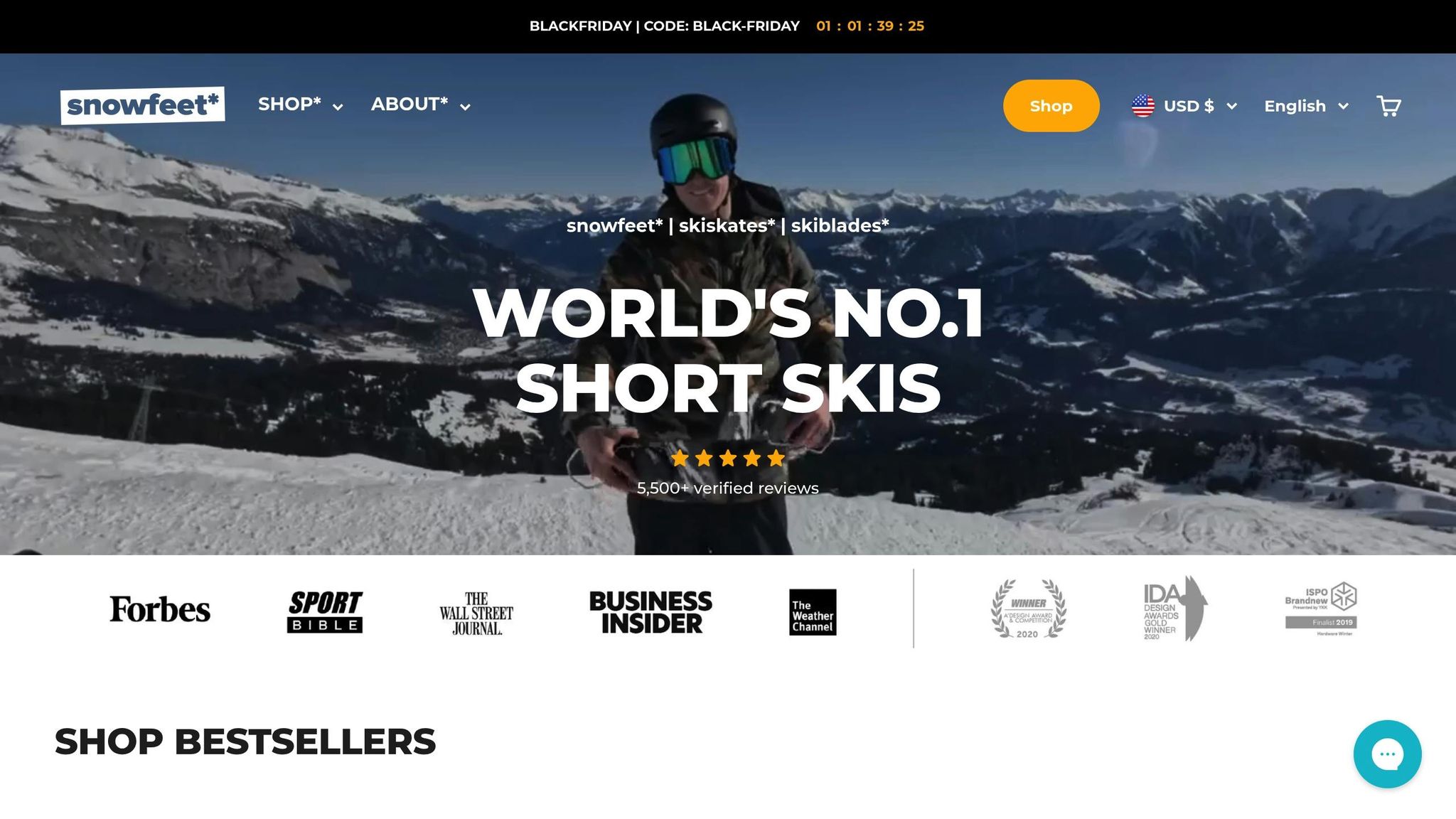
Performance: Turning vs Speed Control
When it comes to hitting the slopes, Snowfeet* Skiblades and traditional skis bring different strengths to the table. It all boils down to what you value more: agility or speed.
Quick Turns with Snowfeet* Skiblades
If sharp turns and quick maneuvers are your thing, Snowfeet* Skiblades are a dream. Measuring just 26–47 inches, their compact size makes them perfect for tight, precise turns - something longer skis from brands like Rossignol or Salomon can't quite match.
"Snowblades are all about making quick, tight turns. Their small size makes them super easy to maneuver, ideal on crowded runs." - Snowfeet Team
This nimbleness shines in terrain parks or anywhere that demands rapid directional changes. Features like widened tips and tails improve balance during tricky moves. Unlike traditional skis that rely on heavy sidecuts for carving, Snowfeet* Skiblades stay stable while turning, making them a great choice for groomed runs and moguls.
Their agility is a game-changer for weaving through trees, navigating crowded slopes, or making quick adjustments without the bulk of traditional skis. While Snowfeet* dominate in maneuverability, traditional skis still have the edge when it comes to raw speed.
Speed and Control with Long Skis
For those who crave speed, traditional long skis are the way to go. Typically over 59 inches in length, they’re built for stability during fast descents.
"Long skis are built for speed demons. Their length and design keep you stable when you're flying down the slopes." - Snowfeet Team
The extra length provides better edge contact and more surface area, which translates to smoother, more stable runs at high speeds. Long skis also excel in deep powder, offering superior flotation compared to shorter options.
That said, for most recreational skiers sticking to groomed runs, the versatility and ease of Snowfeet* Skiblades often make them the more enjoyable choice.
Performance Comparison Chart
| Performance Factor | Snowfeet* Skiblades | Traditional Long Skis |
|---|---|---|
| Turning Radius | Tight, quick turns (excellent) | Wide, sweeping turns (good) |
| Maneuverability | Exceptional in tight spaces | Challenged in crowded spaces |
| Speed Control | Good for moderate speeds | Excellent at high speeds |
| Terrain Parks | Ideal for tricks and obstacles | Cumbersome and difficult |
| Groomed Runs | Excellent performance | Good performance |
| Deep Powder | Adequate flotation | Superior flotation |
| Beginner Friendly | Very easy to control | Requires significant skill |
| Crowded Slopes | Easy to navigate | Difficult to maneuver |
This side-by-side comparison highlights how Snowfeet* Skiblades bring unmatched maneuverability to everyday skiing scenarios. While long skis shine in specific situations like deep powder or high-speed runs, Snowfeet* deliver a flexible and fun option for most recreational skiers.
Learning and Skill Requirements
Snowfeet* Skiblades are shorter, lighter, and designed to make learning easier for beginners. Their compact design helps users gain control faster, offering a smoother introduction to skiing compared to traditional skis.
Easier Learning with Short Skis
One of the biggest advantages of Snowfeet* Skiblades is how they simplify the learning process. At just 26–47 inches long (about 65–120 cm), they’re significantly shorter than traditional skis, which often exceed 59 inches. This smaller size reduces the bulk of gear, letting beginners focus on mastering the basics without feeling weighed down. Plus, there’s no need for specialized ski boots or poles - Snowfeet* Skiblades work with regular winter boots, making them a budget-friendly option for families.
"Snowfeet* Skiblades can be learned in as little as 5 minutes, making them highly accessible for beginners" - Snowfeet Team
Kids, in particular, benefit from this simplicity. Without poles to worry about, young skiers can concentrate on balance and turning. A review from October 2024 highlighted that children found Snowfeet* Skiblades much easier to control than traditional skis. The lightweight design also means less fatigue, allowing beginners to enjoy longer practice sessions on the slopes.
"Snowfeet* Skiblades are easy to learn, often even easier than skiing or skating" - Snowfeet Team
Common Myths About Long Skis
There are a few myths about long skis that can make them seem like the better choice for beginners, but let’s clear those up. One common belief is that longer skis provide better stability. While this might sound logical, many new skiers find the extra length and weight of traditional skis make basic maneuvers like stopping and turning more difficult.
Another misconception is that shorter skis, like Snowfeet* Skiblades, are less safe or somehow not "real" skiing. In truth, modern short skis are designed for excellent control and safety. They help beginners develop balance and coordination more naturally, making the learning process feel intuitive and enjoyable. Their quick, responsive nature also keeps things fun while building essential skills.
Skill Level Comparison Chart
Here’s how Snowfeet* Skiblades compare to traditional long skis when it comes to learning and accessibility:
| Learning Factor | Snowfeet* Skiblades | Traditional Long Skis |
|---|---|---|
| Learning Time | 5 minutes to basic control | Several hours to a full day |
| Equipment Required | Regular winter boots | Specialized ski boots and poles |
| Weight Management | Lightweight and easy handling | Heavier, requiring more strength |
| Balance Development | Natural and intuitive | More challenging and technical |
| Confidence Building | Immediate success | Gradual and often frustrating |
| Fatigue Factor | Low fatigue, longer sessions | More tiring, shorter practice time |
| Age Suitability | Great for all ages, especially kids | Better for teens and adults |
| Skill Progression | Smooth and enjoyable | Steep and demanding |
| Fall Recovery | Quick and less intimidating | Harder with heavier equipment |
With a 4.9 out of 5 rating from over 5,500 verified reviews, it’s clear why Snowfeet* Skiblades are a hit with families and casual skiers. They make winter sports more accessible, fun, and less intimidating for people of all ages.
The growing popularity of shorter skis points to a shift in winter sports. More and more people are choosing equipment that prioritizes fun, ease of use, and rapid skill-building over sticking to traditional designs. Snowfeet* Skiblades are leading the way in this trend.
sbb-itb-17ade95
Portability and Use Options
Snowfeet* Skiblades bring a fresh take on skiing by solving one of the sport's biggest hassles: bulky gear. With their lightweight, compact design, these skiblades make it easier than ever to enjoy spontaneous and varied skiing adventures. Unlike traditional skis, which can feel like a logistical nightmare, Snowfeet* Skiblades are all about simplicity and accessibility.
Compact Size and Easy Transport
Ranging from 26 to 47 inches (65–120 cm) in length, Snowfeet* Skiblades are a game-changer for anyone who’s tired of lugging around oversized skis. To put it in perspective, traditional skis from brands like Rossignol or Salomon measure 59 to 79 inches (150–200 cm) and weigh 6.6 to 11 pounds (3–5 kg) or more. Snowfeet* Skiblades? They clock in at just 3.3 pounds (1.5 kg) or less.
This small size means you can toss them into a regular backpack - no need for giant ski bags or roof racks. Heading out for a quick ski trip? Whether you’re hopping on public transport or hiking to a snow-covered trail, these skiblades make the journey so much easier. Their portability isn’t just convenient; it opens up a whole new level of flexibility for skiers.
More Places to Use Short Skis
The portability of Snowfeet* Skiblades isn’t just about ease of transport - it also means you can use them in places where traditional skis just don’t work. While long skis from brands like K2 or Atomic are perfect for groomed resort runs, Snowfeet* Skiblades thrive in more challenging or unconventional environments. Think narrow hiking trails, local parks, or even crowded terrain parks where longer skis can feel awkward and restrictive.
"Snowblades are super versatile. Whether you're cruising groomed runs, bouncing through moguls, or hitting the terrain park, they handle it all." - Snowfeet Team
In 2023, skiers praised Snowfeet* Skiblades for their ability to navigate tight trails and perform tricks in terrain parks - things traditional skis often struggle with. Their agility makes them ideal for quick turns, tight spaces, and even urban skiing. You can explore wooded areas, hit smaller local hills, or carve through crowded spaces without the usual hassle of traditional ski gear.
Portability Comparison Chart
| Transport Factor | Snowfeet* Skiblades | Traditional Long Skis |
|---|---|---|
| Length | 26–47 inches (65–120 cm) | 59–79 inches (150–200 cm) |
| Weight | Under 3.3 lbs (1.5 kg) | 6.6–11 lbs (3–5 kg) |
| Storage Space | Fits in a backpack/closet | Needs ski rack/large space |
| Car Transport | Fits in trunk easily | Requires roof rack |
| Air Travel | Standard luggage | Oversized baggage fees |
| Carrying Method | Backpack or small bag | Dedicated ski bag needed |
| Setup Time | Instant - no poles needed | Boots, poles, bindings |
| Terrain Flexibility | Parks, trails, slopes | Mostly groomed runs |
| Crowd Navigation | Easy in tight spaces | Challenging |
| Spontaneous Use | Grab and go | Requires planning |
One user, John Mark, summed it up perfectly:
"They made skiing, carving, maneuvering, and stopping so easy. They almost felt like they were not there and no pressure on my knees."
For anyone with limited space - whether you’re living in an apartment, a dorm, or just don’t want to deal with bulky gear - Snowfeet* Skiblades make skiing a whole lot simpler and more enjoyable. It’s skiing, stripped of the hassle.
Cost Analysis and Value
Snowfeet* Skiblades stand out not just for their convenience and flexibility but also for how much they can save you compared to traditional ski setups. While brands like Rossignol, Salomon, or K2 often demand a hefty upfront investment (plus ongoing costs), Snowfeet* offers a full skiing experience at a fraction of the price.
Lower Total Costs
The all-in-one design of Snowfeet* Skiblades eliminates the need for a laundry list of gear. Traditional setups typically require skis, bindings, boots, poles, and transport accessories, which can easily push your total spend beyond $1,500.
With Snowfeet*, you can skip the ski-specific boots (a $200–$500 expense) and use your existing winter or snowboard boots. Poles? Not needed - another $40–$100 saved. And forget expensive ski bags or roof racks; Snowfeet* Skiblades fit right into a standard backpack.
Maintenance is another area where you’ll save. Snowfeet* products cost just $20–$50 annually to maintain, compared to $50–$150 for traditional skis, which require regular waxing, edge tuning, and binding adjustments.
Plus, Snowfeet* products offer more than just skiing. Their multi-purpose design means you can use them for a variety of winter activities, adding even more value to their already competitive pricing.
Snowfeet* Product Prices
Snowfeet* caters to a range of budgets and skiing preferences, offering models that are far more affordable than traditional setups:
- Mini Ski Skates: Starting at $250, perfect for beginners or casual skiers.
- Skiblades 65 cm: Priced at $635.
- Skiblades 99 cm: Retailing for $675.
- Short Skis 120 cm: Even the premium model costs $775, which is still less than most traditional setups before adding bindings and specialized boots.
For comparison, entry-level traditional skis start at $400–$600. Add bindings ($150–$300), boots ($200–$500), and poles ($40–$100), and you’re looking at a total cost of $800–$1,500 or more.
Cost Comparison Chart
Here’s a quick breakdown to show the savings:
| Item/Expense | Snowfeet* Skiblades | Traditional Long Skis |
|---|---|---|
| Equipment | $250–$635 | $500–$1,200 |
| Boots | $0–$300 (if needed) | $200–$500 |
| Poles | Not needed | $50–$100 |
| Bag/Transport | $0–$50 | $50–$200 |
| Maintenance/Season | $20–$50 | $50–$150 |
| Total (est. min–max) | $270–$985 | $800–$2,150 |
Over time, the savings become even clearer. Traditional gear from brands like Atomic or K2 often requires professional maintenance and frequent replacements. Snowfeet* Skiblades, on the other hand, are easy to maintain and built to last.
Transport is another area where you’ll save big. No need for roof racks or oversized luggage fees - Snowfeet* Skiblades are compact enough to store in a small apartment or dorm room, and they’re light enough to carry anywhere.
For families, the savings are even more dramatic. Outfitting a family with traditional ski gear can easily cost $5,000–$8,000, but Snowfeet* Skiblades can get everyone on the slopes for under $2,000. Plus, their shorter learning curve means fewer pricey lessons.
Finally, Snowfeet* products are versatile enough to use in local parks, on hiking trails, or smaller hills, so you can enjoy more skiing days without the added cost of lift tickets. It’s skiing that’s easy on both your wallet and your schedule.
Why Snowfeet* Works Better for Most Skiers
Short Skis Offer More Fun
Snowfeet* isn’t just about saving money or boosting performance - it’s about completely changing how you experience skiing. Their shorter, more agile design (ranging from 65–120 cm compared to the typical 150+ cm of traditional skis) makes them incredibly easy to handle.
This compact size gives you a level of maneuverability that’s hard to match. Whether you’re carving down groomed runs, tackling moguls, hitting terrain parks, or just messing around on your local hill, Snowfeet* Skiblades shine. Unlike traditional ski brands like Rossignol, Salomon, or K2, which often focus on groomed slopes, Snowfeet* offers a level of versatility that opens up a whole new world of skiing opportunities.
In fact, by September 2024, the popularity of Snowfeet* Skiblades had skyrocketed, especially among recreational skiers looking for something dynamic and less intimidating. Plus, their lightweight build means less fatigue compared to lugging around heavy long skis from brands like Atomic or Völkl. This means you can enjoy longer, more relaxed sessions on the slopes without feeling drained.
Main Benefits Summary
Snowfeet* packs a lot of perks into its compact design. Here’s why they’re becoming a go-to choice:
- Ease of Learning: Their shorter length and lighter weight make skiing less daunting for beginners and more enjoyable for everyone.
- Portability: Toss them in a standard backpack - no need for roof racks or oversized ski bags.
- Cost-Effective: Affordable pricing without sacrificing quality or performance.
- Better Maneuverability: Perfect for quick turns, tight spaces, and crowded slopes.
- Multi-Terrain Ready: Handles everything from powder and groomed trails to park features.
- Less Physical Strain: Lightweight design means less effort, so you can ski longer without wearing yourself out.
"With their compact size, you won't get as worn out using them." – Snowfeet Team
Another bonus? You don’t need any special gear. Snowfeet* works with your regular winter or snowboard boots, so there’s no need to shell out for pricey, specialized ski boots.
For recreational skiers, beginners, families, or anyone who wants to prioritize fun and simplicity, Snowfeet* Skiblades offer an experience that traditional long skis just can’t match.
FAQs
How do Snowfeet Skiblades compare to traditional skis in terms of performance on different terrains?
Snowfeet Skiblades are all about agility and quick turns, making them a blast for playful skiing on groomed slopes or packed snow. Their smaller size gives you more control, making it easier to learn or try out new tricks without feeling overwhelmed.
On the flip side, traditional long skis shine when it comes to speed and stability. They’re ideal for carving wide turns, tackling steep runs, or floating through deep powder. If you’re into versatility, portability, and a dynamic skiing experience, Snowfeet Skiblades are a great pick for most terrains and styles.
Is it easier for beginners to learn with Snowfeet Skiblades compared to traditional skis?
Yes, Snowfeet Skiblades are a fantastic option for beginners because they’re much easier to handle than traditional skis. Their shorter length makes them super easy to maneuver, giving new skiers a chance to build confidence and control without feeling overwhelmed. Long skis can sometimes feel bulky and intimidating, but Snowfeet Skiblades make the learning process more intuitive and, honestly, a lot more fun.
Thanks to their compact design, you’re less likely to catch an edge, which means fewer wipeouts and more time focusing on the basics like turning and stopping. If you’re just starting out and want a simpler, quicker way to enjoy the slopes, Snowfeet Skiblades are a great pick.
Do Snowfeet Skiblades require different maintenance compared to traditional skis?
When it comes to maintenance, Snowfeet Skiblades are a breeze compared to traditional skis. Like regular skis, they need waxing and edge tuning to keep them performing their best. But here’s the good part: their small size makes the whole process way easier. You don’t need a huge workspace or a ton of tools - just the basics will do.
This compact design and portability mean less time fussing with upkeep and more time carving down the slopes. Simple, right?







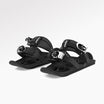
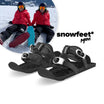

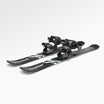



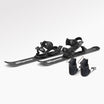






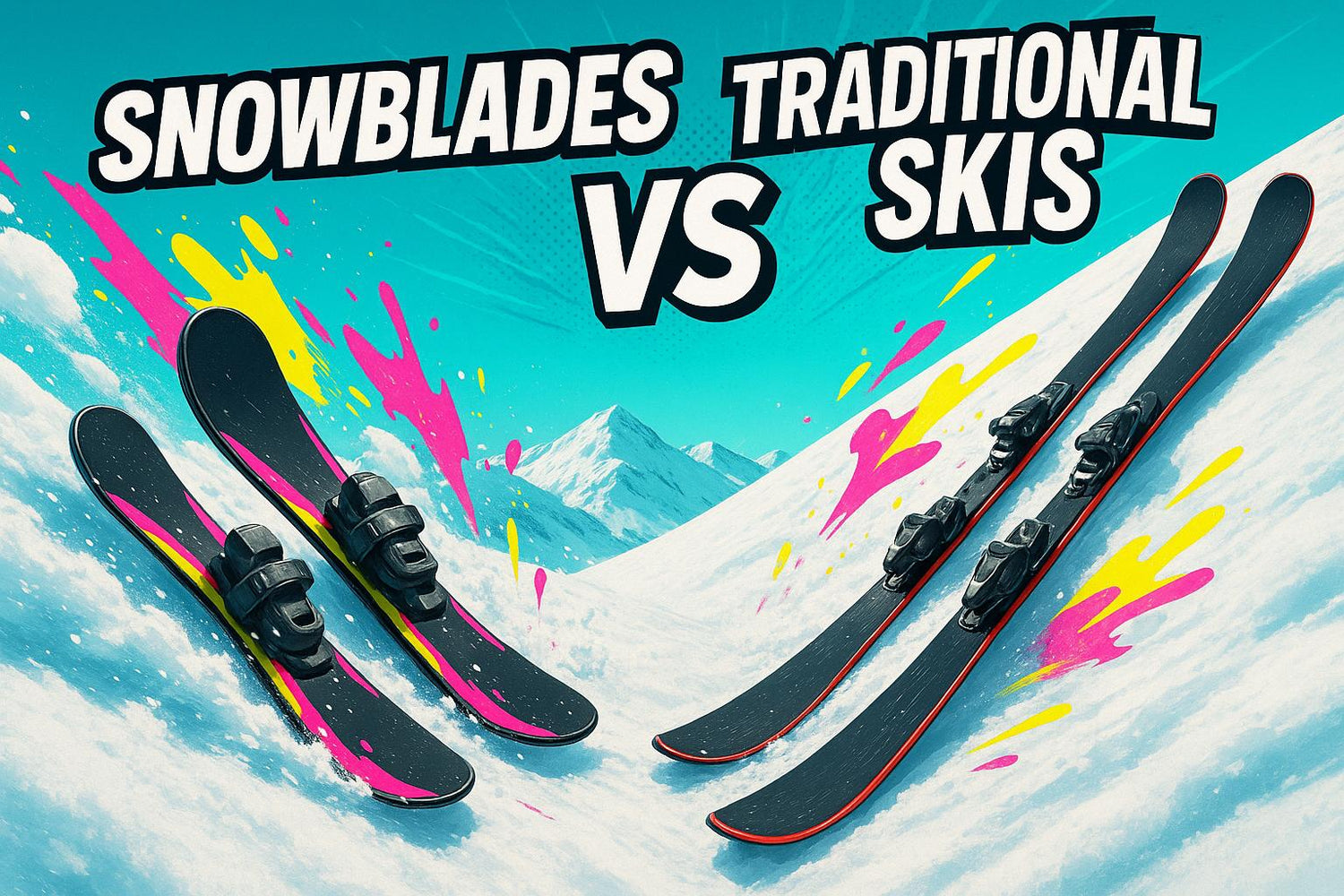
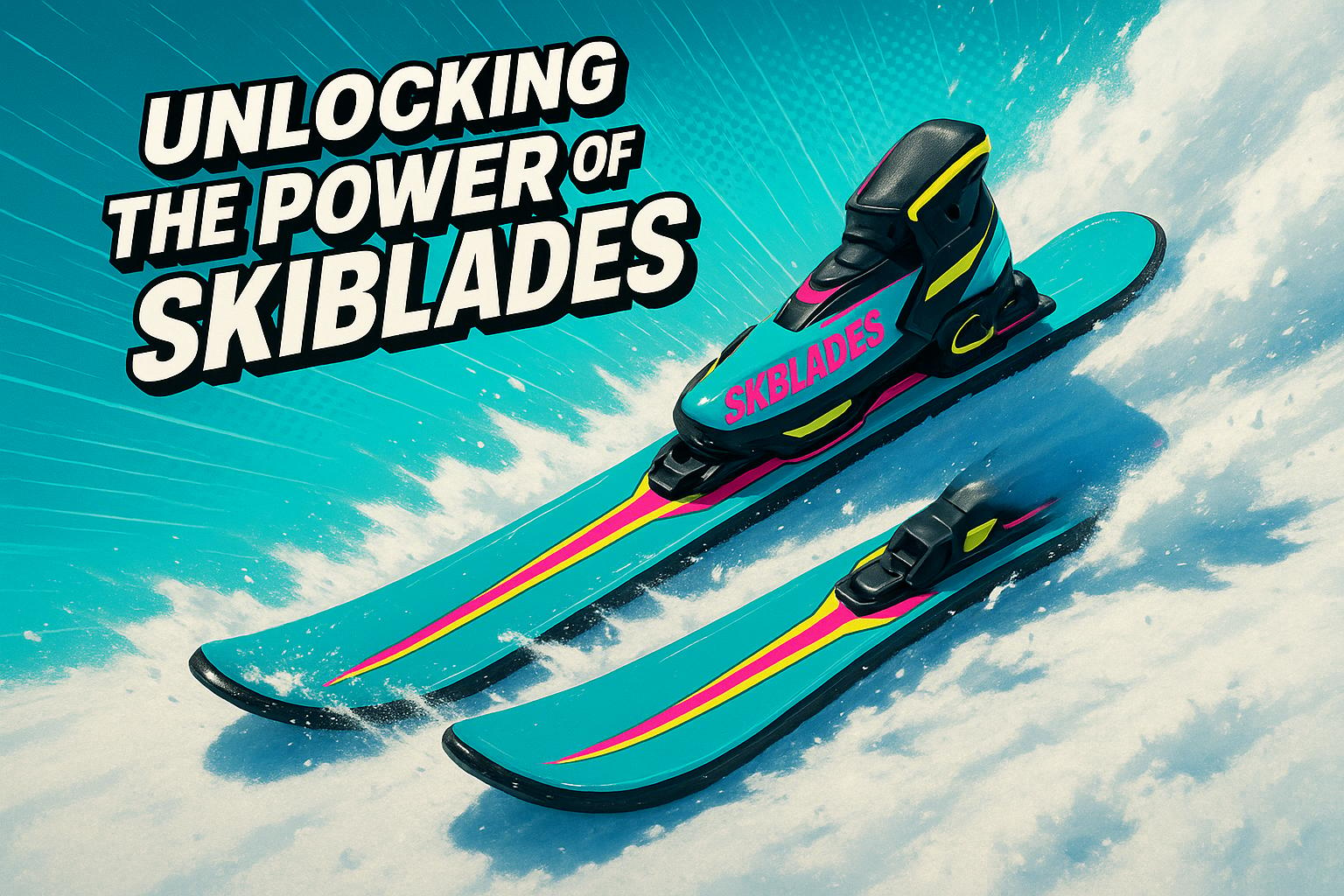
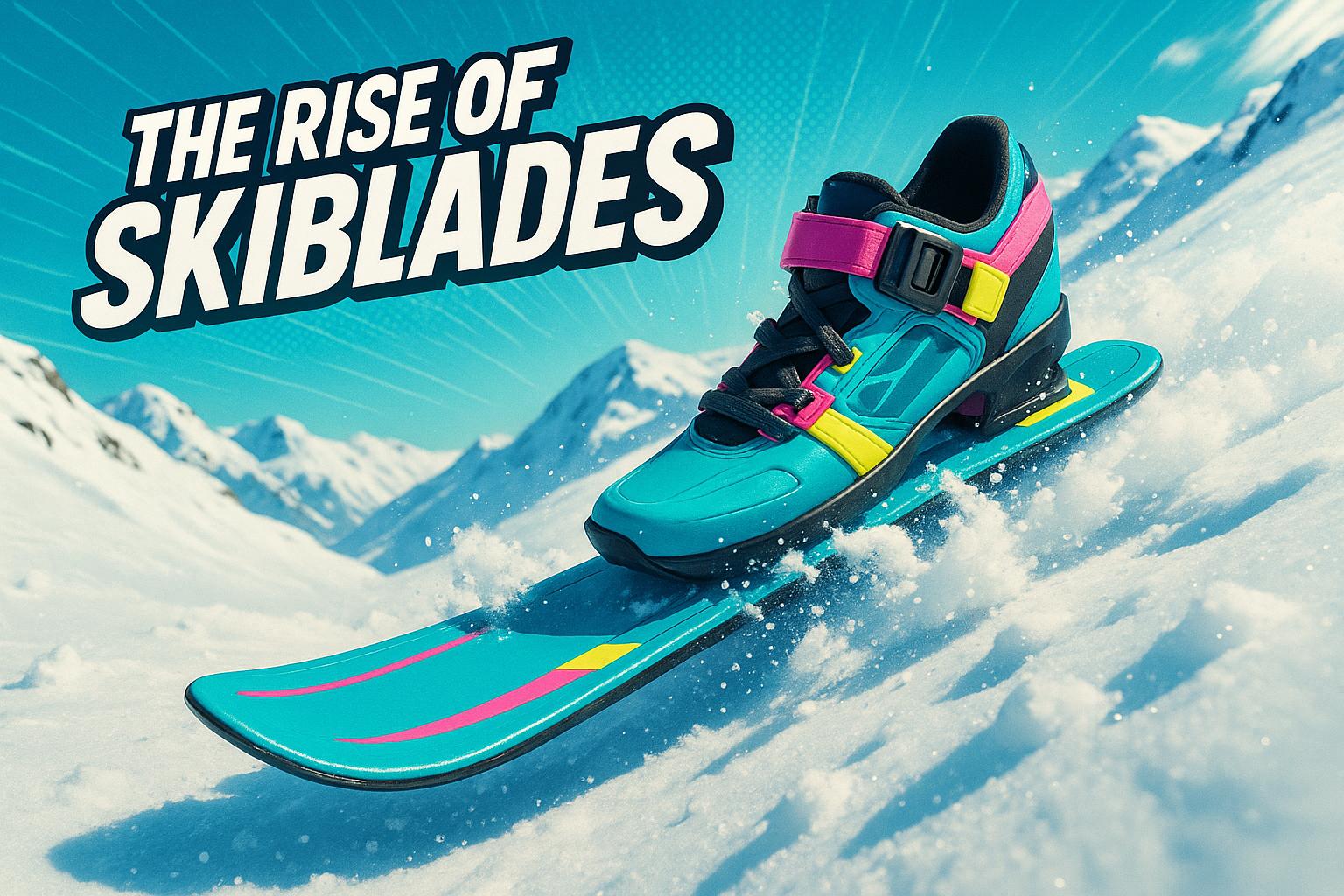




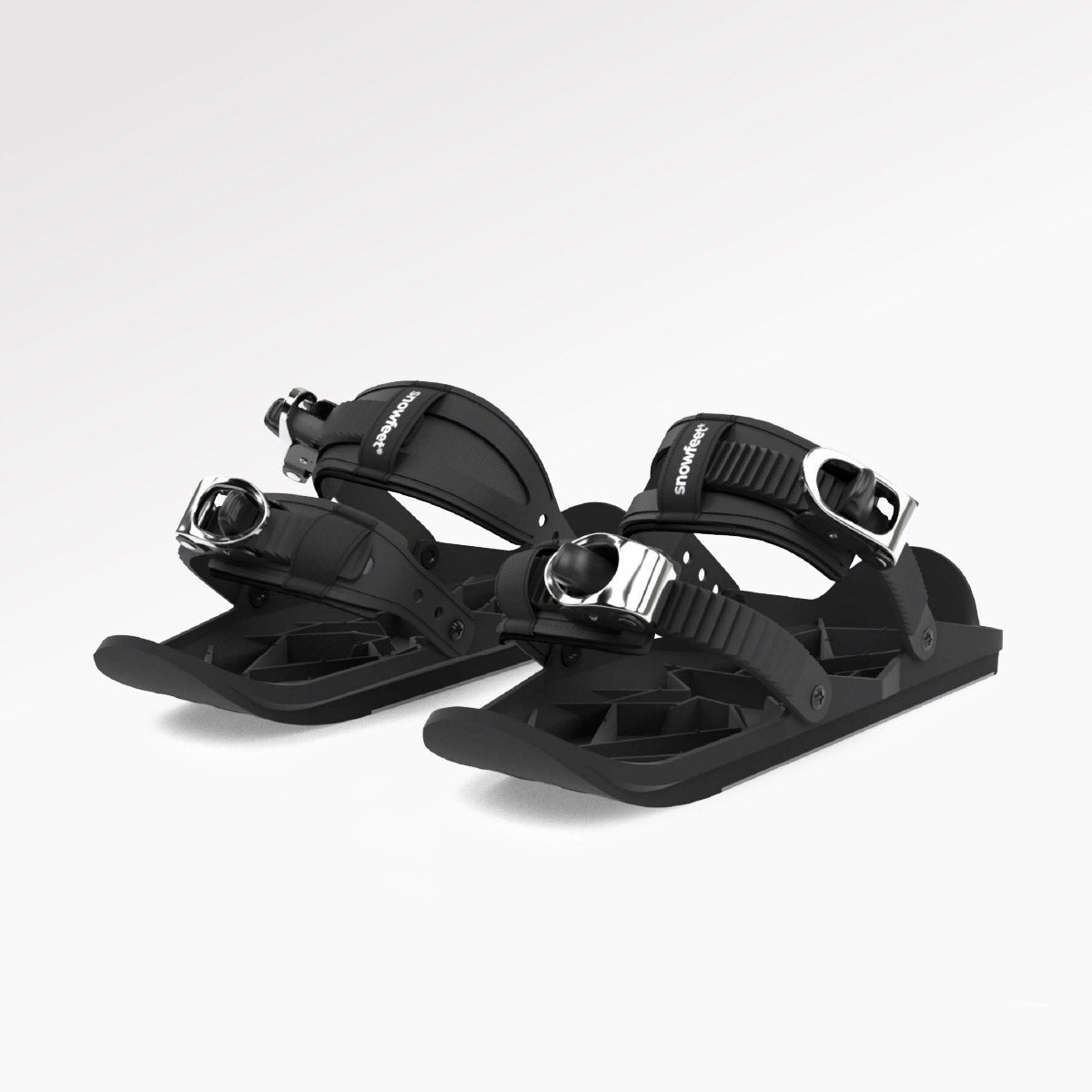
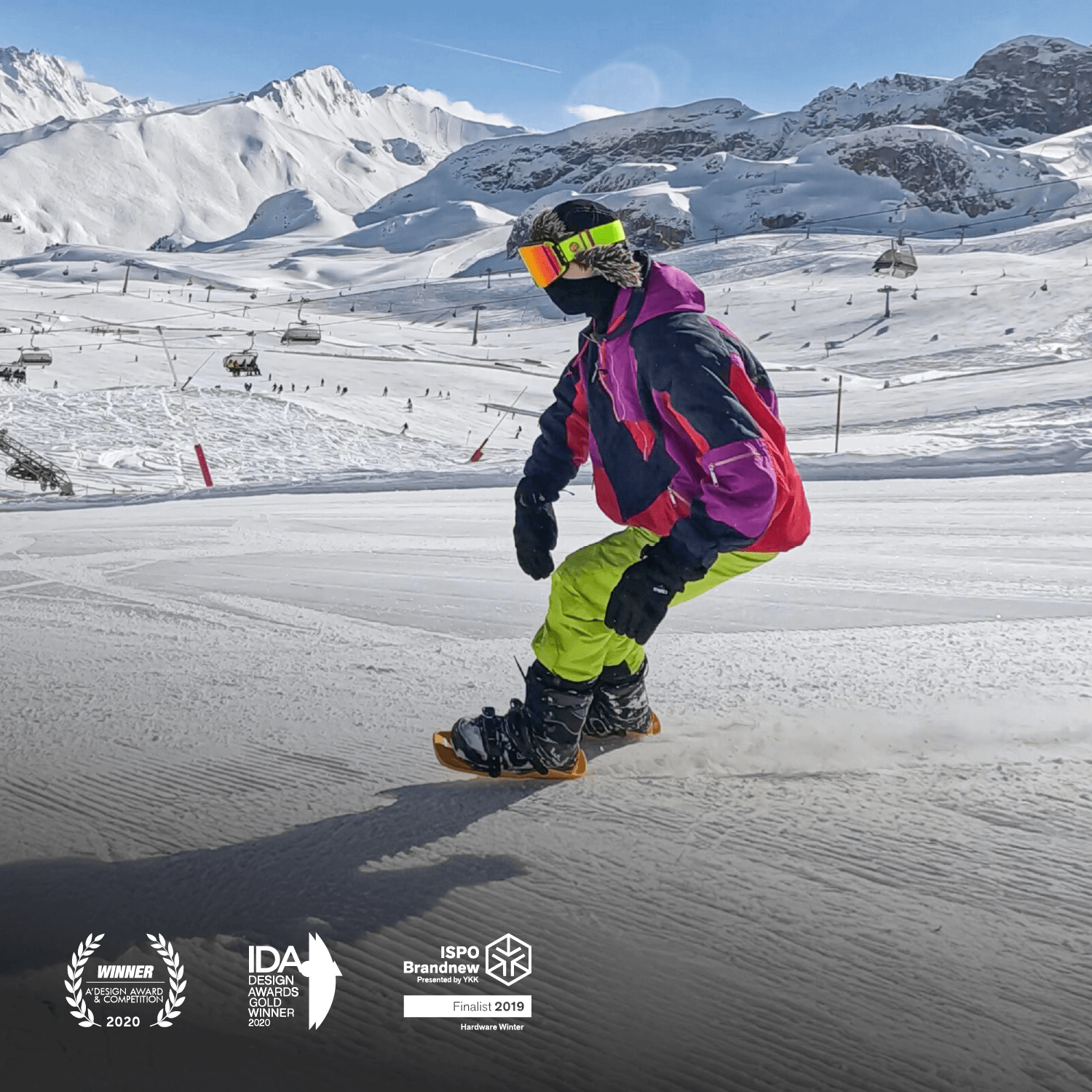


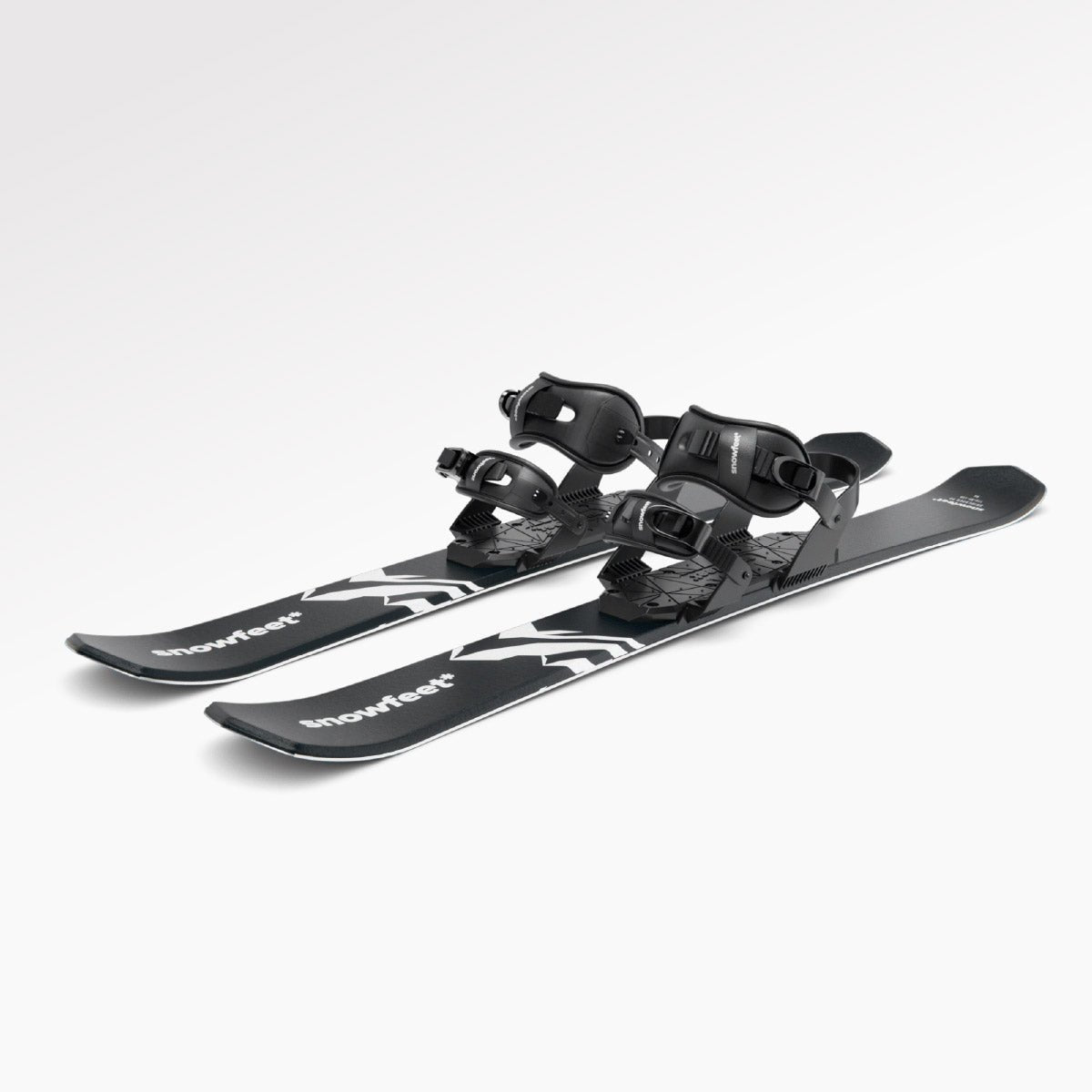

Lämna en kommentar
Denna webbplats är skyddad av hCaptcha och hCaptchas integritetspolicy . Användarvillkor gäller.